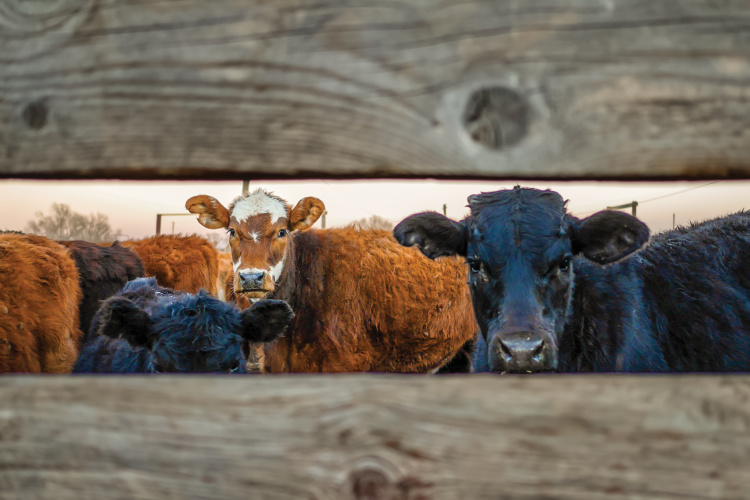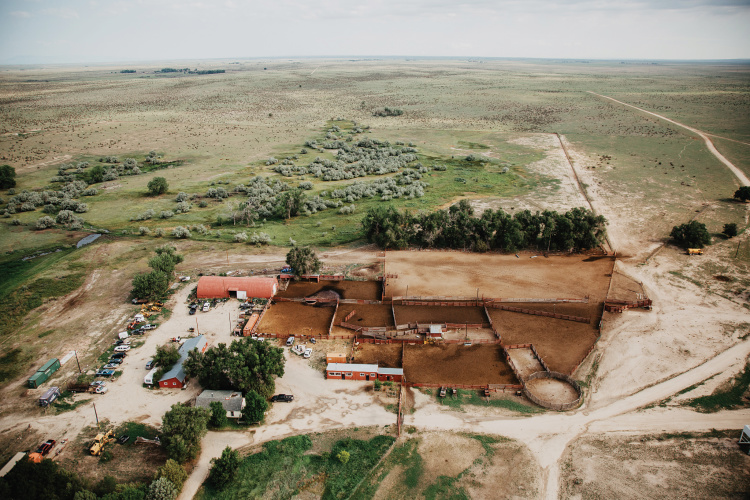Home > Colorado > Colorado Environment > How Colorado Farmers Protect the Environment for Future Generations
How Colorado Farmers Protect the Environment for Future Generations
In partnership with: Colorado Department of Agriculture
When farmers stop in to see Stephen Jaouen at the USDA Natural Resources Conservation Service (NRCS) field office in Glenwood Springs, they express concerns over drought, excessive heat, monsoon storms and other extreme weather conditions.
Jaouen, a district conservationist for the NRCS, works with farmers and ranchers to implement conservation and sustainability practices that help mitigate climate change, conserve natural resources and build resilience.

“Water availability and drought, those issues are constant on our farmers’ and ranchers’ minds, and they are trying to do the best with what they’ve got in a sustainable way,” Jaouen says.
The federal agency’s mission statement is “Helping people help the land.” Jaouen’s staff helps farmers find ways to reduce energy dependence and usage, cut down on carbon emissions, control invasive plants and minimize salts from draining into rivers.
Doing More with Less
NRCS issues federal funds to those that apply through programs such as the Environmental Quality Incentives Program (EQIP) to implement conservation practices. Participation is voluntary, and farmers who enroll agree to a payment that is roughly a 50-50 cost share.
Colorado receives about $30 to $35 million a year in EQIP funds, for a total of $60 to $70 million in conservation efforts going on statewide, Jaouen says. The Glenwood Springs office has 60 active EQIP contracts in a five-county area and exceeds $1.2 million in annual grant funding.
“They know it’s going to cost them to install, but they understand it’s going to help them in the long run and stay in farming and produce food and fiber for the rest of us,” Jaouen says.
Those conservation efforts include no-tillage and low-tillage, crop rotation, prescribed cattle grazing, energy-efficient irrigation systems and water storage projects. Planting more permanent crops, along with no-till practices, helps capture carbon and store it in the soil
rather than putting it into the air.

Fighting invasive weeds is another issue.
“We do a lot of expensive irrigation-type systems, so when there is a drought we can still produce food and fiber with less water and also manage those weeds properly during those drought cycles,” Jaouen says.
See more: How Cover Crops Protect Farmland and the Environment
The field office also provides technical assistance if a farmer is having an issue with weed
control, erosion, soil health or water conservation.
Through ag expos and partnering with local conservation districts, NRCS field offices help spread the word about various programs that can increase a farmer’s bottom line, reduce environmental impact and encourage climate stewardship.
“Most farmers and ranchers are all about doing more with less,” Jaouen says. “Our farmers and ranchers are always interested in reducing those energy inputs that would generate greenhouse gases and climate change.”
Forest fires are another growing concern, and the office works with public and private landholders on prevention awareness, forestry practices and defense measures to improve the forest’s resistance and resilience.
A More Holistic Approach
Ranchlands, a Colorado-based ranching business that specializes in the management of large-scale ranches, partners with owners to implement conservation programs that coexist alongside the company’s cattle operations.

Duke Phillips, CEO of Ranchlands, focuses on preserving ecosystems and the region’s ranching heritage while honoring what the land will produce. Phillips is a third-generation rancher. He says drought and weather extremes have impacted the industry in a big way. During dry spells, the land cannot produce enough feed for the cattle, forcing ranchers to reduce their herds.
“There are very strong motivations for ranchers to create a healthy natural world around them,” Phillips says. “We depend on natural resources.”
Ranchlands uses cattle to increase biodiversity, manage invasive plant species and restore riparian areas. Phillips sees ranching as the most compelling alternative to large-scale conservation efforts in the West.
See more: Colorado’s Conservation Efforts Protect Water Supply For the Next Generation
“We think that conservation is a product we produce, the same as beef,” Phillips says. Besides rotating cattle, herds are grazed in a migratory fashion around the ranch so the land is rested during the growing season. Large herds also break the surface of the ground so organic matter can recycle back into the soil instead of oxidizing in the air.

Ranchlands also uses business diversification to help with land conservation and environmental sustainability. Having diverse revenue streams enables ranchers to reduce stocking rates immediately when a drought begins, reducing stress on the ecosystem.
Ranchlands offers educational programs, as well as a ranch management training program, among other agritourism attractions like concerts, hunting and fishing.
The company works closely with the Nature Conservancy and Rocky Mountain Bird Observatory to take advantage of science-based tools.
“We do a lot of different kinds of monitoring to make better decisions in terms of the health of the land,” Phillips says.
See more: Behind the Scenes of Colorado’s Soil Health Efforts



